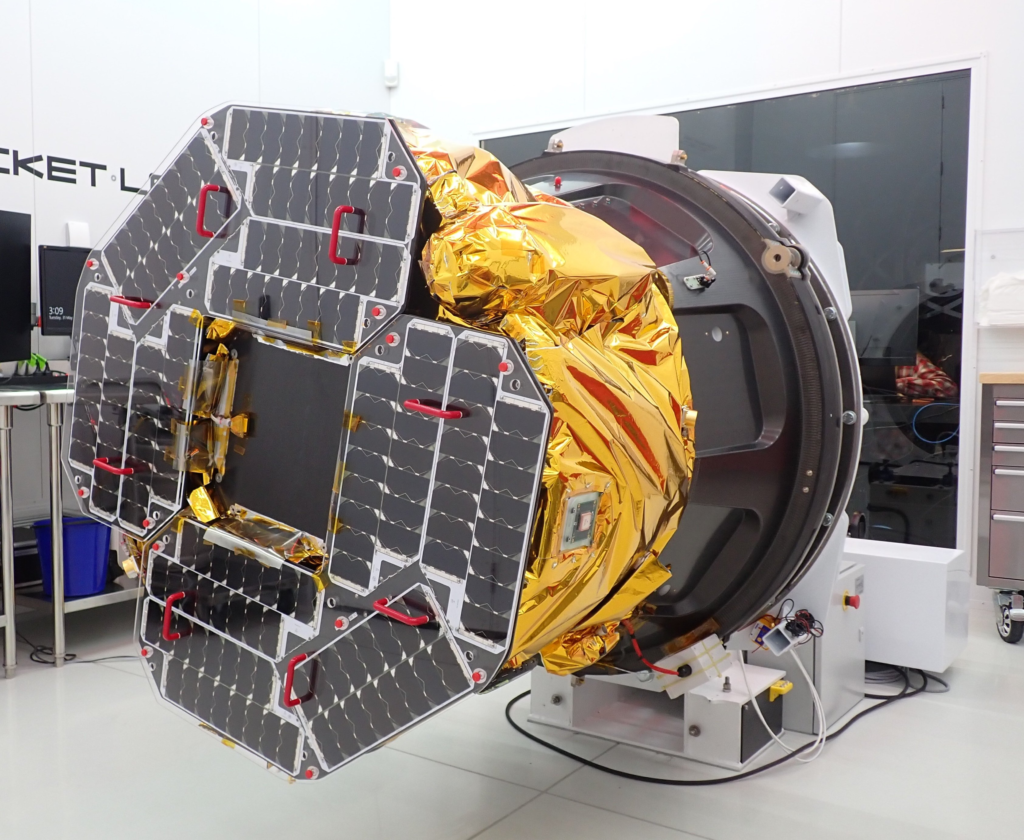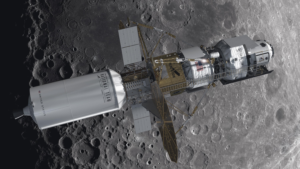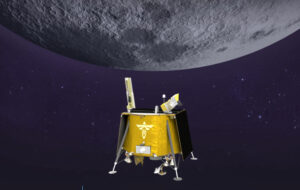
Another Update On Rocket Lab’s Mission To The Moon
Just a few days ago Rocket Lab’s Electron rocket lifted off from New Zealand with a payload intended for the Moon. This marked the beginning of a historic mission and start of something special for Rocket Lab, NASA, and more. After the initial launch, the rocket successfully separated stages and reached orbit not long after.
Since then, Rocket Lab has been keeping us updated on its progress within Earth’s orbit as it continues to make Photon engine burns to prepare for the transfer to the Moon. By now there have been all but 1 with the final burn expected to happen tomorrow on the 4th. Assuming this burn goes just like the 6 previous, CAPSTONE will officially be on its way to the Moon not long from now.
This puts in perspective the opportunity that even small-lift launch vehicles have such as Electron with the help of Photon. It also sets the stage for some more of Rocket Lab’s ambitious long range missions coming up including a launch to Venus and more. Here I will go more in-depth into some of the recent updates Rocket Lab has provided, what is left, and what to expect in the coming weeks regarding CAPSTONE.
Recent Updates

While it’s only been a few days since the rocket was launched, both CAPSTONE and Photon have been very busy in preparation for the transfer to the Moon. At the time of the last update, Rocket Lab had just completed its 5th Hyper Curie engine burn on Photon. Not long after on July 1st, Peter Beck tweeted saying, “Update: Another successful burn! We actually combined burns 6&7 together as we determined that the HyperCurie engine was capable of pulling off a single maneuver and we are now at 69,680km apogee with just the final translunar injection burn left to do in a couple of days time.” On the same day, Rocket Lab clarified by mentioning, “The Moon just got a little closer! We’ve successfully ignited Photon’s HyperCurie engine a 6th time, raising #CAPSTONE’s apogee to 69,680 km. Since we combined 2 burns into 1 for this maneuver, only 1 final burn remains to set CAPSTONE on a ballistic lunar transfer to the Moon.”
Rocket Lab then went on to provide some more information on the Hyper Curie engine and what makes it so special. Later on July 1st they pointed out, “The HyperCurie engine is designed and built in-house by our team and CAPSTONE is its first mission. So far, engine performance is far exceeding expectations, setting us up well for our upcoming missions to Mars and Venus with Photon!” They tweeted again soon after saying, “This small but mighty engine? It has now propelled Lunar Photon almost 70,000 km from Earth! On July 4 it will accelerate Lunar Photon to 24,500 mph (39,400 km/h), setting CAPSTONE on a ballistic lunar transfer trajectory to the Moon in support of @NASA’s Artemis program.” This tweet included an up close image of the engine. Finally, the company provided one last update mentioning, “The HyperCurie engine has now spent four days conducting precise orbit-raising burns to increase Lunar Photon’s apogee. A single Lunar Photon orbit of Earth is now taking 23.5 hours. The Moon is getting closer!” They finished by saying, “Lunar Photon (pictured) is not the first Rocket Lab-built spacecraft, nor will it be the last! Recently we were selected by @MDA_space to lead the design and manufacture of 17 spacecraft buses at 500kg each for @Globalstar’s new Low Earth Orbit satellites.” Its clear from these updates and progress reports that not only is the mission going very well so far but Rocket Lab is also getting excited about its other upcoming interplanetary missions.
The Moon Journey

Now that we know more about the current progress of Photon and the CAPSTONE payload, we can take a closer look at some of the recent reactions to the mission and what to expect in the coming weeks. “CAPSTONE is an example of how working with commercial partners is key for NASA’s ambitious plans to explore the Moon and beyond,” said Jim Reuter, associate administrator for the Space Technology Mission Directorate. “We’re thrilled with a successful start to the mission and looking forward to what CAPSTONE will do once it arrives at the Moon.” CAPSTONE is currently in low-Earth orbit, and it will take the spacecraft about four months to reach its targeted lunar orbit. CAPSTONE is attached to Rocket Lab’s Lunar Photon, an interplanetary third stage that will send CAPSTONE on its way to deep space. Shortly after launch, Lunar Photon separated from Electron’s second stage.
Over the last few days, we have watched Photon’s engine periodically ignite to accelerate it beyond low-Earth orbit, leading up to Photon releasing the CubeSat on a ballistic lunar transfer trajectory to the Moon. CAPSTONE will then use its own propulsion and the Sun’s gravity to navigate the rest of the way to the Moon. The gravity-driven track will dramatically reduce the amount of fuel the CubeSat needs to get to the Moon. More specifically, the CubeSat will rack up serious mileage hurtling through deep space on its traverse from Earth to the Moon. Assisted by the Sun’s gravity, it will reach a distance of 963,000 miles from Earth – more than three times the distance between Earth and the Moon – before being pulled back towards the Earth-Moon system. This sinuous track, called a ballistic lunar transfer, or BLT, follows dynamic gravitational contours in deep space. CAPSTONE’s team will calculate the BLT trajectory based on the ever-changing positions of Earth, the Moon, and the Sun. Expending little energy, CAPSTONE will cruise along these contours punctuated by a series of planned trajectory correction maneuvers. At critical junctures, CAPSTONE’s team at Advanced Space’s mission operations center will command the spacecraft to fire its thrusters to adjust course. Terran Orbital Corporation in Irvine, California, designed and built CAPSTONE and developed novel technology that allows the spacecraft to execute maneuvers while maintaining control of the spacecraft on thrusters only.
“Delivering the spacecraft for launch was an accomplishment for the entire mission team, including NASA and our industry partners,” said Bradley Cheetham, principal investigator for CAPSTONE and chief executive officer of Advanced Space, which owns and operates CAPSTONE on behalf of NASA. “We have already learned a tremendous amount getting to this point, and we are passionate about the importance of returning humans to the Moon, this time to stay!” At the Moon, CAPSTONE will enter an elongated orbit called a near rectilinear halo orbit, or NRHO. Once in the NRHO, CAPSTONE will fly within 1,000 miles of the Moon’s North Pole on its near pass and 43,500 miles from the South Pole at its farthest. It will repeat the cycle every six and a half days and maintain this orbit for at least six months to study dynamics. “CAPSTONE is a pathfinder in many ways, and it will demonstrate several technology capabilities during its mission timeframe while navigating a never-before-flown orbit around the Moon,” said Elwood Agasid, project manager for CAPSTONE at NASA’s Ames Research Center in California’s Silicon Valley. “CAPSTONE is laying a foundation for Artemis, Gateway, and commercial support for future lunar operations.”
During its mission, CAPSTONE will provide data about operating in an NRHO and showcase key technologies. The mission’s Cislunar Autonomous Positioning System, developed by Advanced Space with support from NASA’s Small Business Innovation Research program, is a spacecraft-to-spacecraft navigation and communications system that will work with NASA’s Lunar Reconnaissance Orbiter to determine the distance between the two lunar orbiting spacecraft. This technology could allow future spacecraft to determine their position in space without relying exclusively on tracking from Earth. CAPSTONE also carries a new precision one-way ranging capability built into its radio that could reduce the amount of ground network time needed for in-space operations. In addition to New Zealand hosting CAPSTONE’s launch, New Zealand’s Ministry of Business, Innovation and Employment and a University of Canterbury-led team are collaborating with NASA on a research effort to track Moon-orbiting spacecraft. New Zealand helped develop the Artemis Accords – which establish a practical set of principles to guide space exploration cooperation among nations participating in NASA’s 21st century lunar exploration plans. In May 2021, New Zealand was the 11th country to sign the Artemis Accords. Looking back at the recent progress, the mission is doing very well. While Rocket Lab has stayed confident, the current achievement the company is making is very impressive. It also gives the industry more confidence in future ambitious missions the company is working towards like Mars and Venus.
Conclusion
So far the mission to the Moon has been very exciting to watch and keep up with. Currently, the Lunar Photon is preparing for its final engine burn before leaving Earth’s orbit and heading to the Moon. Months from now we should expect to see the payload arrive and gather important information for Artemis and more. We will have to wait and see how it progresses and the impact it has on the space industry.



